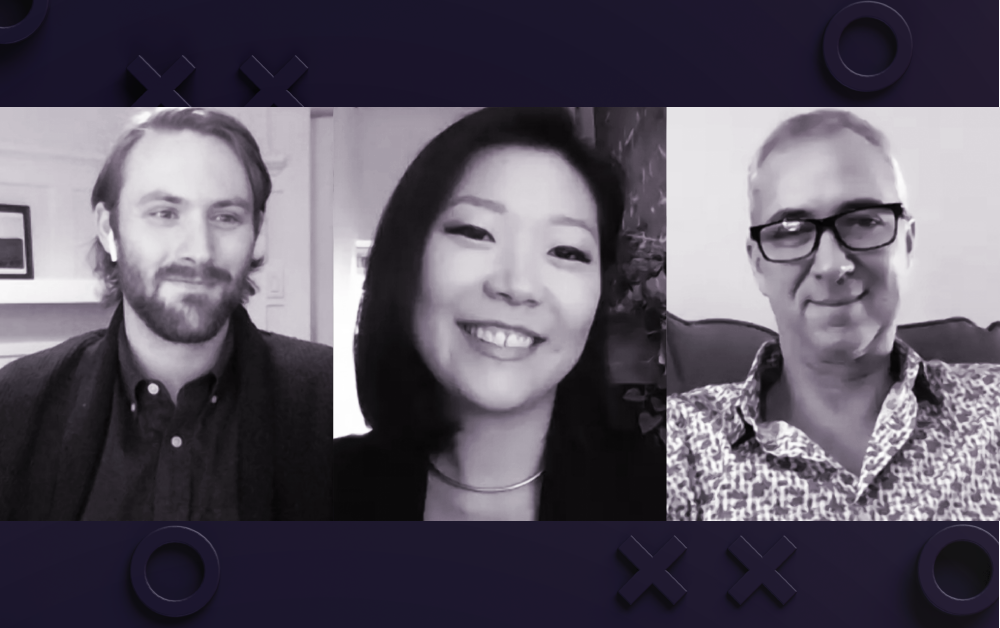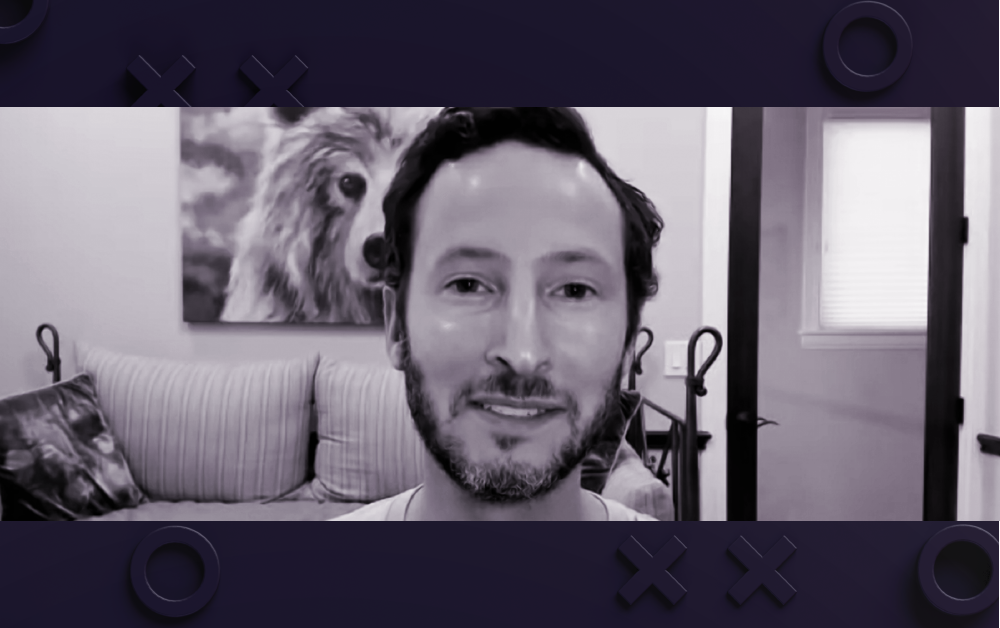
Articles
6 Tips For Getting More Bang For Your Marketing Bucks
February 3, 2021

Let's just debunk the myth that you need a limitless marketing budget to grow your brand now. What you really need is every dollar spent to generate a return. And that starts with getting your message through all the noise.
So, at Playbook 2020, the ultimate virtual small business event, we asked marketing trendsetters what strategies are resonating right now. And we got unfiltered insights on what they're seeing emerge from the post-pandemic market. Plus, how to apply these concepts to your business.
Here's what they had to say:
👉 Watch all the sessions! Register for the free replay now - we'll send it right to your inbox.
1. Customer experience comes before marketing
Before allocating tons of money to marketing, make sure you have a robust customer experience. Because marketing - no matter how fruitful - doesn't work if your product or service isn’t 100%.
But that doesn't mean put off marketing altogether! Instead, focus on the pieces that support customer experience and your product - like your website.
Ian Faison, Host of the Demand Gen Visionaries podcast, advises that you “make sure [you] have a seamless and frictionless digital experience. I know those are buzzwords. But your website [should be] super simple and easy to fill out.”
Once you’ve fine-tuned the customer experience, make sure you're communicating why your company is the better option. Meaning, invest in messaging that separates you from your competition. Whether it's your proprietary product or your customer experience - whatever you do best - showcase it front and center.
[Companies] need to make sure their customers are happy, and then figure out how to market what that happiness looks like.
<blockquoteauthor>Ian Faison, Host of Demand Gen Visionaries<blockquoteauthor>
2. Research costs nothing
Most of us are familiar with the sentiment, meet your customers where they're at. But to actually do that, marketers need to first know who their target customers are and where exactly "at" is. And that starts with research.
“Research costs you nothing,” Everette Taylor, CMO at Artsy, asserts. "So, find out what your customers want and where your customers live - both online and offline."
Then, plan your marketing budget based on what you find. This way, you put your marketing dollars - no matter how limited - into the right marketing channels. No need to guess.
"You want to know where to reach [your customers] and where you can interact with them. That’s the best way to figure out where to invest your money."
<blockquoteauthor>Everette Taylor, CMO at Artsy<blockquoteauthor>
But Everette also echoed Ian’s thoughts on perfecting the customer experience first. “Because if you're not doing that [well], then marketing can only take you so far.” So, use your research to inform how you can also improve your customer experience.
3. Build a community and share their stories
According to Erin Blaskie, former Director of Marketing at Fellow, there’s a lot that businesses can do without a lot of marketing money. “I'm a huge believer in doing as much as possible without spending any money where possible,” she said.
For example, initiatives like community building and sharing customer stories are both highly effective and inexpensive. That's because, “whether it's video or text-based content, you can tell the stories of people who are already using your services to attract more people like them.”
At Fellow, Erin uses Twitter to conjure up conversations between panelists and prospective clients. It’s called #ManagerChats. And she uses each chat to help build the brand, foster community, and create valuable content.
Hosting the chats costs nothing except time. And Erin maximizes this investment by using the tweets to create more content later.
"We try to maximize as many channels as possible, while also keeping in mind how to repurpose the content [we create]. This makes every single piece of content count well beyond the first time it’s posted."
<blockquoteauthor>Erin Blaskie, Fractional CMO and Marketing Advisor<blockquoteauthor>
4. Don’t forget the call to action
According to Everette, the most common mistake he sees is forgetting to include a call to action (AKA what you want people to do next).
“What a lot of people don't realize is that content can be focused on commercial action,” he told us. “As you're creating content, think about how you can actually link back to the actions you want people to take.”
Ryan Bonnici, former CMO of G2 and one of Forbes’ World’s Most Influential CMOs, says your call to action depends on one thing: where the customer is on the buyer journey.
"Content for [G2] comes down to thinking about the buyer journey. Which are awareness, consideration, and decision."
<blockquoteauthor>Ryan Bonnici, CMO at Whereby<blockquoteauthor>
For example, G2, a software and services review site, groups customers using their search terms. Meaning, customers who search for “ways to make my sales team more efficient” are in the awareness stage.
Meanwhile, customers who search “CRM software reviews” are in the consideration phase. And if they're searching for something specific, like “Salesforce versus HubSpot,” they’re at the decision stage.
Each stage requires a different action, whether it’s learn more, start a trial, or buy now. That way, consumers see a call to action that most closely relates to the next step they should take.
But even if you're not there yet, make sure you conclude content with some call to action - even if it's standardized throughout your content. Otherwise, you may miss a prime opportunity to convert.
5. Sell customers where they want to be
So, if you're meeting your customers where they're at, you want to sell them where they want to be.
To do this, Erin suggests mapping out your buyer journey and using it to inform the content you create. She explained, “think about who the individual people are and what stage they're in. Then, craft content that meets them where they're at.”
But this content should also help customers think beyond where they are today. Meaning, it should help them imagine where they want to go - and position your product as the means to get there.
Erin explained, “it's the whole reason we named our podcast 'Super Managers.' We want people to know if they consume this podcast, they’ll become a super manager themselves.”
In other words: what superpower do you give your customers? Whatever your answer is, be sure to embed that into your content.
6. Borrow ideas that inspire you
Being innovative in your marketing can go a long way in reaching eyeballs. But how do you fuel your creativity? According to all 4 panelists, it comes down to consumption.
“The more you can consume, the better you create,” Ryan said matter of factly.
So, for Ryan, this means screenshotting every ad or piece of art he loves. That way, he can revisit them later. He says these screenshots fill about 50% of his photo album. And he even bookmarks more ideas on Instagram and tags his team in compelling posts.
“I think so many people try to reinvent the wheel," Ryan explained. "But why reinvent the wheel when you can find some wheels that are spinning perfectly and just kind of tweak them?”
Meaning, owners and leaders shouldn’t be afraid to steal great marketing ideas. Because being innovative doesn’t always have to mean being original. Sometimes, it takes borrowing an idea, mashing it up, and making it your own.
Bonus: Use 20% of your budget to experiment
Most marketing efforts focus on the short term. But Everette says he also experiments with long term efforts at Artsy.
“I grew up with the saying: keep the main thing, the main thing," he said. "But also for the longevity of your brand, you want to experiment [in places] where you might not see the return immediately.”
Everette suggests spending roughly 80% of your marketing dollars on your bread and butter (AKA your core messaging and what you know works).
Then, experiment with the rest. "[This spend is] about planting those seeds," Everette said. "Create channels, education, and information for the long tail return.” That way, when the strategies that work today stop working, you already have your next steps mapped out.
Similar Blog Posts












